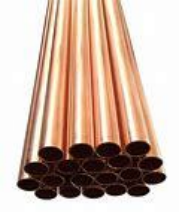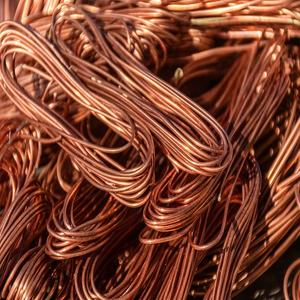1. Introduction
In the past 48 hours, global copper prices have surged past $10,000 per metric ton due to supply constraints in Chile and rising demand from renewable energy and EV sectors. This spike has reignited interest in copper-based materials—especially copper rod and copper strip—used across construction, electrical grounding, and recycling industries. Whether you’re sourcing a copper earth rod for a substation or stripping copper wire for scrap, understanding the nuances between copper rod types and related products is more valuable than ever.

2. Copper Rod Variants and Their Applications
Not all copper rods are created equal. The term ‘copper rod’ broadly refers to solid, cylindrical copper stock, but its composition and coating drastically affect performance and cost.
- Solid copper rod: Pure, high-conductivity rods used in electrical busbars, welding, and high-end earthing systems. These are often labeled as copper round bar or round bar copper.
- Copper bonded earthing rod: A steel core electroplated with a thick layer of copper (typically 0.25mm+). Also called copper bonded ground rod or copper clad steel earth rod, it offers corrosion resistance at a lower price than solid copper.
- Copper clad ground rod: Similar to bonded rods but often uses metallurgical bonding. Common in telecom and utility grounding.
For grounding applications, professionals debate between solid copper earth rod versus copper bonded steel. While solid copper lasts longer in corrosive soils, copper bonded steel provides 80% of the performance at half the copper rod price—making it a popular compromise.
3. Welding and Brazing: Specialized Copper Rods
When it comes to joining copper components, the right filler rod matters. Copper welding rod and copper brazing rod serve distinct purposes.

Copper to copper brazing rods (often phosphorus-copper alloys) are ideal for HVAC and plumbing because they flow smoothly without flux. In contrast, copper to copper welding rod is used in high-strength applications like busbar fabrication. Note: true ‘copper rod welding’ usually requires inert gas shielding and preheating due to copper’s high thermal conductivity.
Welding rod copper types vary—some contain silicon or tin for better fluidity. Always match the rod alloy to your base metal to avoid weak joints or cracking.
4. Copper Strip: From Earthing to Scrap Recycling
Flat copper products—often called copper strip, copperstrip, or flat copper strip—are essential in grounding grids, transformers, and even decorative roofing (e.g., copper roof strip). Standard sizes like copper earth strip 25x3mm are widely used in industrial earthing.
Specialty variants include beryllium copper strip (for springs and connectors), nickel plated copper strip (for corrosion resistance), and thin copper strips (as fine as 1mm copper strip) for electronics.

The scrap market has also driven interest in stripping copper wire. While burning copper wire for scrap is illegal and hazardous, the best way to strip copper cable involves mechanical strippers or automated machines. Stripping wire for recycling yields high-purity copper metal strips, which can be sold or repurposed.
If you’re searching for ‘copper strip near me,’ local metal suppliers often carry roll of copper strip in various alloys and thicknesses—including copper alloy strip and flexible copper bus bar for custom electrical builds.
5. Pricing and Sourcing Trends
With copper prices volatile, buyers are comparing copper rod price versus copper bonded alternatives. A solid copper round bar may cost 2–3× more than a copper bonded steel rod of the same dimensions. Similarly, copper strip price fluctuates with LME rates—currently around $9–12/kg for standard grades.
For HVAC technicians, ac copper pipe price and aircon copper tube costs are also climbing. Yet copper pipework remains irreplaceable for its thermal efficiency and durability—especially 15mm copper pipe and 22mm copper tube in residential AC systems.
Recyclers note that stripping copper wire for scrap is still profitable if done safely. The fast way to strip copper wire involves commercial strippers, not open flames. And while ‘stripping cable for copper’ sounds simple, purity affects resale value—hence the emphasis on the best way to strip copper wire without damaging the metal.
6. Conclusion
From earthing rod copper in substations to copper strip for snails in gardening (yes, it deters pests!), copper’s versatility is unmatched. Whether you need a copper clad earth rod for cost-effective grounding, a copper brazing rod for leak-free joints, or a roll of thin copper strips for electronics, understanding material differences ensures you get performance without overspending. As copper prices climb, smart selection—between solid, bonded, or clad—will define project success and scrap profitability alike.
Our Website founded on October 17, 2012, is a high-tech enterprise committed to the research and development, production, processing, sales and technical services of ceramic relative materials such as Copper. Our products includes but not limited to Boron Carbide Ceramic Products, Boron Nitride Ceramic Products, Silicon Carbide Ceramic Products, Silicon Nitride Ceramic Products, Zirconium Dioxide Ceramic Products, etc. If you are interested, please feel free to contact us.

